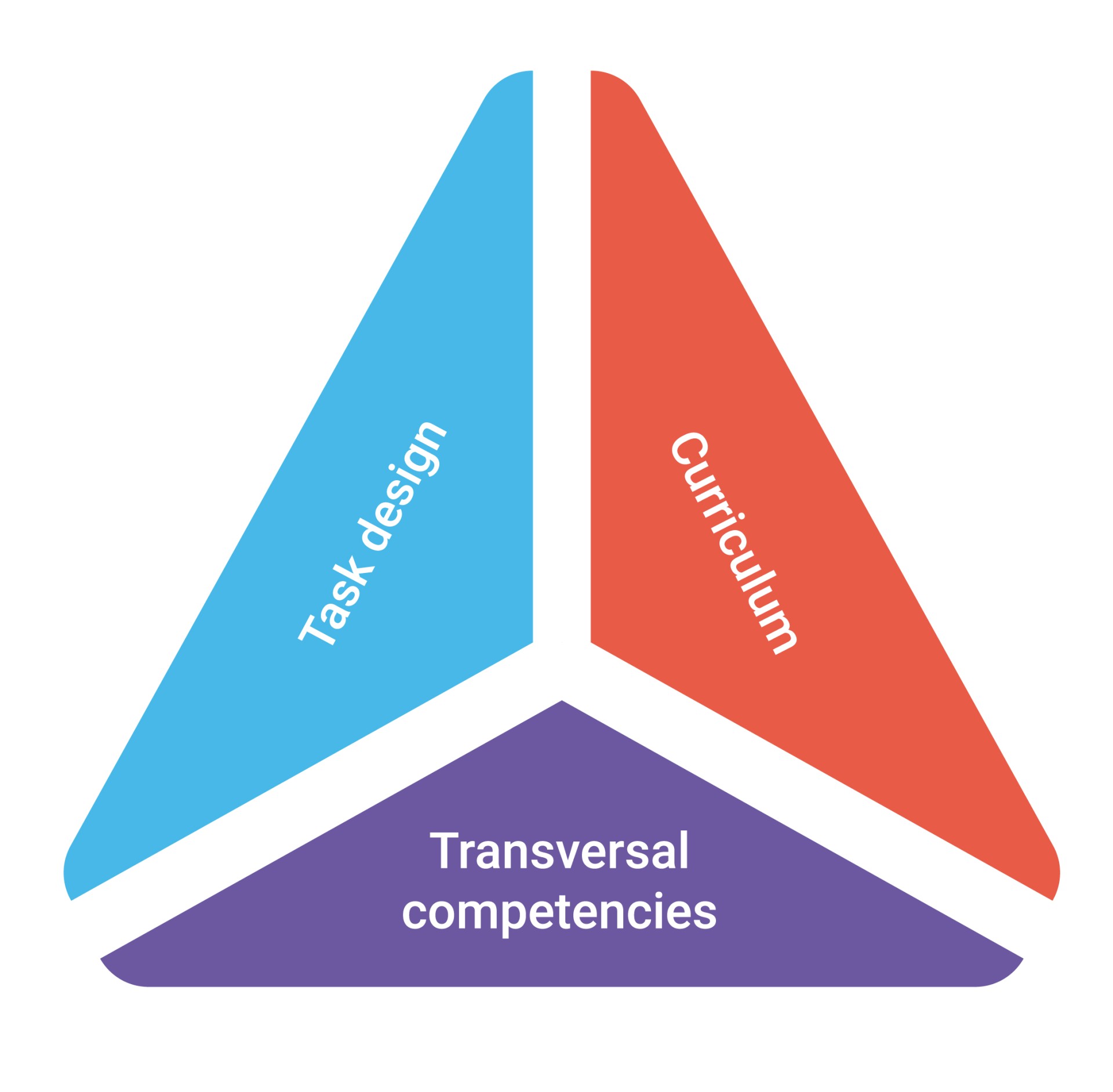
Project-based learning in the 21st century classroom
Research 20 Aug 2024 8 minute readACER India provided technical support to the Sri Aurobindo Society to strengthen its Auro Project-Based Learning Initiative.
Equipping students with essential 21st century skills is imperative in today’s rapidly evolving and complex world. It is crucial to reflect on whether our education systems have adapted to keep pace with these significant changes.
Overreliance on traditional teacher-centric educational methods, which emphasise rote learning and memorisation, to a large extent hamper students' abilities to apply knowledge in real-world contexts. Such approaches and methods often result in learners becoming disengaged and disconnected from learning, leading to severe consequences such as low levels of learning and, in many cases, increased dropout rates.
Educators and policymakers are calling for action for a transformation in educational approaches to change the way learning happens in classrooms. One approach that has made notable advancements and gained popularity among K-12 policymakers and educators to pave its way to classrooms is project-based learning (PBL). Historically, PBL has emerged from constructivist theory deeply rooted in John Dewey's educational philosophy of ‘learning by doing’.
PBL is a student-centred approach, in which students are engaged with real-life problems and contexts, providing them opportunities to think critically and solve problems during the learning process. It equips students with essential competencies, enabling them to transfer their learning to new kinds of situations and problems and to use knowledge proficiently in performance situations.
The Auro Project-Based Learning Initiative
The National Education Policy 2020 recommends schools ensure that learning is meaningful and relatable for children. This acknowledgement stems from the realisation that the traditional approaches are inadequate for nurturing critical thinking and problem-solving skills.
The Sri Aurobindo Society (SAS) launched the Auro Project-Based Learning Initiative (PBLI) for students in grades 1 to 5 across 19 states in India, with the aim of enhancing classroom engagement through joyful learning activities. The initiative’s primary objective is to help students achieve foundational literacy and numeracy by engaging them in meaningful projects. The initiative aims to cultivate critical thinking, creativity, communication, and problem-solving skills among primary grade students by ensuring their active participation in learning through an interdisciplinary approach.
ACER India is providing technical support to the Auro PBLI by developing a research-driven PBL framework. This framework is designed to guide the creation of learning and assessment tasks for students. Additionally, we will provide implementation guidelines tailored for teachers and schools. The initiative aims to ensure that the PBL approach in Auro PBLI is robust, effective, and aligned with good practices in education.
PBL in action: From theory to practice
The aim is to move beyond traditional academic instruction and offer an innovative project-based learning framework that encourages engagement and relevance. This can be achieved by integrating real-world problems into a structured curriculum, progressively introducing complex and collaborative projects. The approach allows students to build their skills systematically, while continuous assessment and feedback ensure that learning gaps are identified at the right time and addressed.
The first step towards an outcome-centric efficacious solution is developing a robust, framework-based on research, design principles, and standards. We developed the PBL framework based on 3 major dimensions:
- curriculum – including content knowledge and skills required to achieve curricular goals
- transversal competencies – including 21st century skills such as critical thinking, communication, problem solving and collaboration
- task design – comprising 7 criteria including authenticity and sustained inquiry.
While curricular and competency domains are derived from the National Education Policy 2020 and the National Council Framework for School Education 2023, design principles have been adapted from the Gold Standard PBL. The ‘Big 7’ design principles are foundational pillars and all 3 domains together enhance the effectiveness of PBL, aiming to particularly benefit students facing educational challenges.

PBL as a tool for interdisciplinary learning
In traditional education, subjects are often compartmentalised into silos, which exist independently of the others. This segregation can hinder students' ability to see connections between different fields of knowledge and apply their learning in real-world contexts.
Research has consistently shown that integrating disciplines enables students to transfer their knowledge and skills more effectively to new situations, thereby promoting deeper learning and understanding.
For instance, the project titled, ‘How animals find their food’ for grade 5 students outlines the potential for an interdisciplinary approach in a PBL classroom. In this project, grade 5 students analyse how animals adapt to their environments and the relationships they have with other organisms in different ecosystems by engaging in various activities.
Students learn how animals develop special traits to survive in specific habitats while exploring their interactions with plants and other animals in ecosystems. They also examine the role of honeybees in pollination or predator-prey relationships in grasslands. This exploration helps students achieve science-specific learning goals, for example, how living things depend on each other and their surroundings for survival.
During this task, students also discuss how geographical factors impact animal food-finding behaviour, and how animals in arid desert environments are adapted to find scarce water sources and food, compared to those in lush rainforests where resources are abundant, but competition is high. While doing all this, they collate data related to animal populations, food availability, rainfall, and temperature, applying mathematical competencies such as data tabulation and presentation, and fraction and percentage conversion.
Finally, students write an essay on ‘Adventures in the Forest’, where they get an opportunity to creatively imagine and explore how animals search for food, which helps them enhance their language skills while integrating their scientific and mathematical insights into a creative narrative form.
Such is the power of PBL, as it not only deepens students' understanding of the subject matter but also fosters creativity and critical thinking by facilitating integrated learning, where students engage with real-world scenarios in a meaningful and interconnected way.
What next
Auro PBLI resources are expected to be used by more than 5 million students per year for 4 years across 22 states. Teachers are being empowered to ensure effective use of these resources in the classroom.
PBL is a powerful framework to dissolve artificial disciplinary barriers and foster higher-order thinking abilities through interdisciplinary learning. It allows students to apply their learning beyond the classroom setting and into the world at large.
In summary, PBL offers opportunities for students to become intentional learners, formulate new questions, observe diverse connections, and advance new ideas, thus fostering a rich and holistic learning experience.